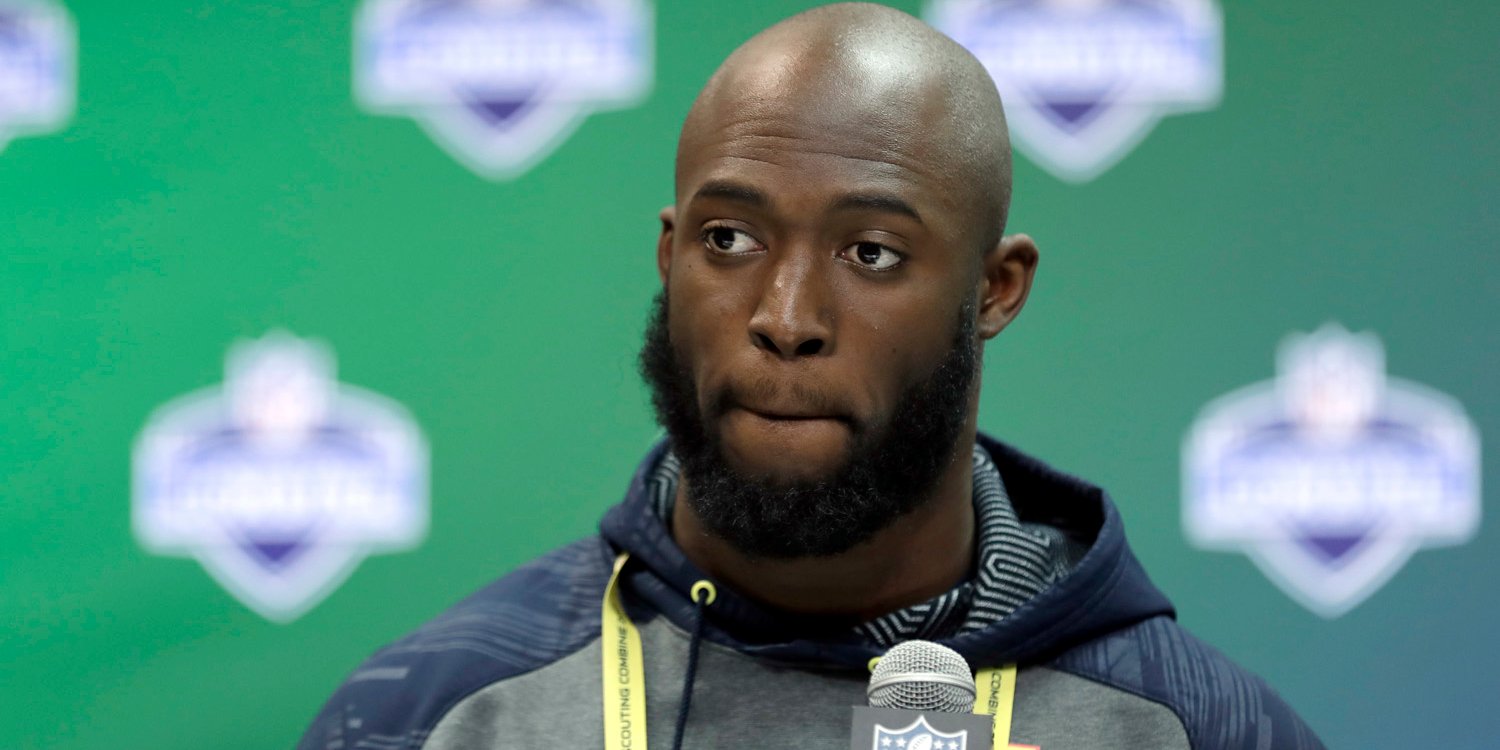
Leonard Fournette has been considered a future NFL star since his breakout season during his sophomore year in college.
The LSU running back has been targeted as a first-round pick, and many in the NFL world have believed he could be an effective, bruising running back.
However, at the NFL Draft combine this week, Fournette has given the football world pause in some areas.
First, Fournette showed up heavier than expected, at 240 lb, five lb heavier than his college weight. Fournette claimed it was “water weight” and not something to worry about. The football world still took notice.
Then, on Friday, Fournette posted just a 28.5-inch vertical, lower than any running back at last year’s combine, according to ESPN’s Jenna Laine. According to NESN, it’s the fifth-worst vertical for a running back since 1999.
However, shortly after posting a disappointing vertical, Fournette ran a 4.5-second 40-yard dash. Though it was slightly slower than his targeted 4.4-second goal, it was impressive nonetheless, considering his size.
While many people rightly argue that combine numbers mean very little about a prospect’s NFL future — many people also noted that Fournette is a powerful back, not a leaper — others still found his weight and vertical worrisome. Dane Brugler of NFLDraftScout and CBS called it “alarming.”
Leonard Fournette with a 28 1/2 vertical is an alarming number. Only one RB had a sub-30 inch vert at last year’s Combine.
— Dane Brugler (@dpbrugler) March 3, 2017
Jumping drills (broad, vertical) are less about how high or far, more about lower body explosion. They are threshold drills. https://t.co/817aI5RI1t
— Dane Brugler (@dpbrugler) March 3, 2017
ESPN’s Chris Mortensen said it may be indicative of where Fournette is physically after being injured in college.
Leonard Fournette showing up at 240 lbs, then having a weak 28.5 inch vertical jump are more red flags after a season with injuries.
— Chris Mortensen (@mortreport) March 3, 2017
Former NFL player and SB Nation writer Stephen White also argued that the tests can still be revealing.
Verticals matter. Broad jumps matter. They measure explosion and you want you skill players to have explosion. Not end all be all, but still
— Stephen White (@sgw94) March 3, 2017
As did Ethan Young, a scout for Bleacher Report.
Jamaal Charles and LeSean McCoy only had verticals of 30.5″ and 29″, but they are zone runners who win with lateral change of direction.
— Ethan Young (@NFLDrafter) March 3, 2017
For a North/South burst runner like Leonard Fournette, poor vertical is an issue. Pacing to comp with Reuben Droughns/Allen Bradford types.
— Ethan Young (@NFLDrafter) March 3, 2017
Pro Football Focus’ college site found that Fournette’s disappointing combine numbers match their pre-draft analyst of Fournette. PFF worried about Fournette’s skill and one-speed running style.
After Leonard Fournette posts a 28.5″ vertical jump, a look back at @PFF_Mike‘s take on the LSU back: pic.twitter.com/CRI3IqGvun
— PFF College Football (@PFF_College) March 3, 2017
Others, however, are not worried. While his vertical disappointed, his 40 time compared favorably to other NFL running backs.
Leonard Fournette 40: 4.51
Times for 240+ RBs:
Derrick Henry 4.54
Brandon Jacobs 4.56
Ricky Williams 4.56
Jamal Lewis 4.58
LeG Blount 4.70
— Warren Sharp (@SharpFootball) March 3, 2017
ESPN’s Katherine Terrell reports that Fournette has largely impressed scouts, and his quick 40 time will only help his cause.
I was told Fournette was very impressive this week in looks (Even at 240) + interviews. With a 4.5, that vertical is not going to matter.
— Katherine Terrell (@Kat_Terrell) March 3, 2017
In fact, combined with his weight, Fournette’s 40 time may actually intrigue him to some teams:
Fournette running 4.51 @ 240 pounds will impress a lot of coaches. DBs aren’t trying to hit a freight train in the open field..
— Bucky Brooks (@BuckyBrooks) March 3, 2017
Again, as many have noted, this is not the definitive analysis of Fournette. He ran well, and he may pass teams’ personality tests and prove worthy of being a first-round pick. But for a star college player who seemed ready for the NFL years ago, his transition has been a little bit rocky to start.













